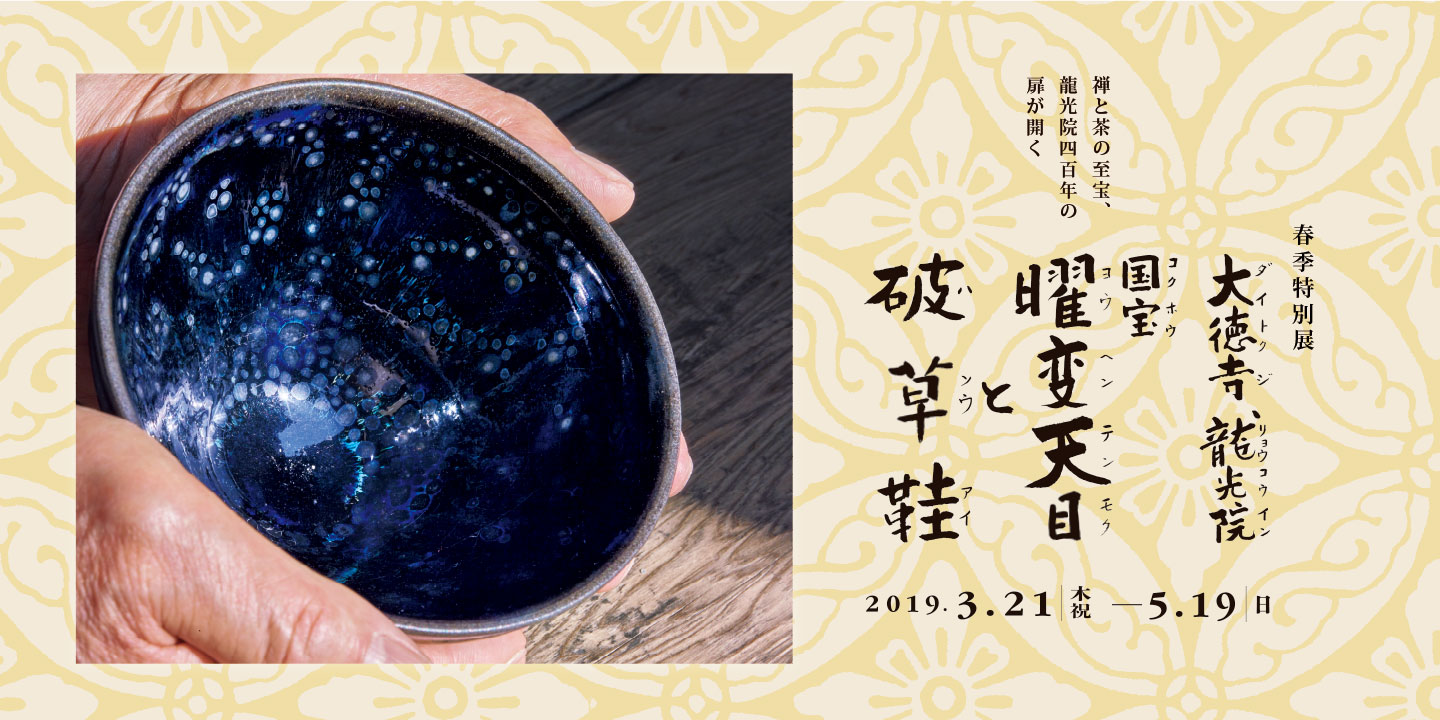Spring Special Exhibition

Note: This exhibit has closed.
Please note that this information pertains to an exhibition that has closed.
Ryōkō-in is a subtemple of the historic Zen monastery Daitoku-ji in the Murasakino district of Kyoto. It was founded in 1606 by the abbot Kōgetsu Sōgan (1574–1643), under the patronage of the military commander Kuroda Nagamasa as the family temple in memory of his father Kuroda Kanbee. Born the second son of the wealthy Sakai merchant and tea master Tennōjiya Tsuda Sōgyū, Abbot Kōgetsu was known for his high education and outstanding Zen teachings, and was instrumental in making Ryōkō-in a cultural center where Prince Takamatsu-no-miya Yoshihito, Kobori Enshū, Shōkadō Shōjō, and other leading cultural figures gathered.
Also, because of Kōgetsu, many treasures of the Tennōjiya family survived the summer campaign of the siege of Osaka in 1615 and have been preserved at the temple to this day.
With the complete cooperation of Ryōkō-in, this exhibition presents an overview of 400 years of this temple’s history. Highlights include the National Treasure-designated Yōhen tenmoku teabowl and calligraphy by the Chinese Chan master Mian (J., Mittan, 1118–1186), as well as Important Cultural Property-designated Persimmons and Chestnuts (attributed to Muqi) and Yuteki tenmoku teabowl. Also featured are the Tennōjiya family treasures, Abbot Kōgetsu’s belongings that reflect the aesthetics of the Kan’ei era, works associated with historic figures the abbot revered, and objects owned by successive abbots of the temple. This exhibition explores the unbroken succession of Zen since Kōgetsu that continues to live on to the present day at Ryōkō-in Temple.
Information
- Exhibition Term
- March 21, 2019 - May 19, 2019
- Venue
- North Wing
※Objects are subject to change during exhibition period.
Exhibits
North Wing
Spring Special Exhibition
Living in Zen and the Daitokuji Ryōkōin Heritage
Please click here for the list of works.